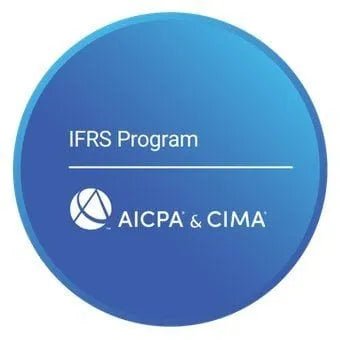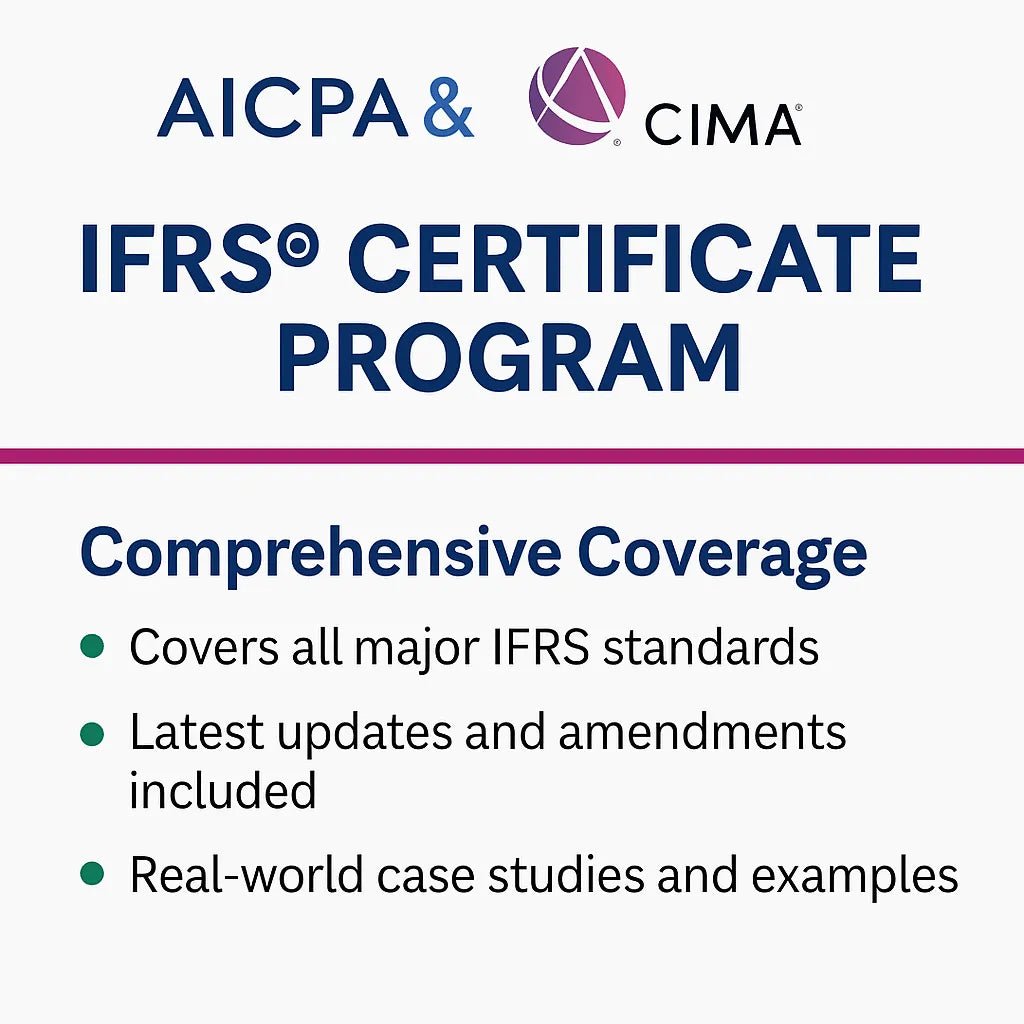IFRS 18 vs IAS 1: Key Differences
IFRS 18 vs IAS 1: Key Differences in Financial Reporting Standards
IFRS 18 vs IAS 1 represents how entities present financial information differently. The International Accounting Standards Board (IASB) introduced IFRS 18 to enhance the clarity and comparability of financial statements. But how does it differ from IAS 1? IAS 1 has guided financial statement presentation for years, yet IFRS 18 redefines classification, disclosure, and the use of management-defined performance measures (MPMs). This blog will break down the critical distinctions between these two standards, providing a detailed, user-friendly guide.
What are IFRS 18 and IAS 1?
IFRS 18: Primary Financial Statements
IFRS 18, introduced in 2024 and effective in 2027, aims to improve how financial statements communicate an entity’s performance and financial health. The new standard emphasizes:
- Consistent categorization of income and expenses
- Enhanced disclosure of MPMs
- Clearer aggregation and disaggregation of items
Learn more about the Best IFRS Certification Course to deepen your understanding of IFRS updates.
IAS 1: Presentation of Financial Statements
IAS 1, effective since 2005, establishes the foundation for financial statement presentation, including defining terms like assets, liabilities, equity, income, and expenses. While IAS 1 sets essential guidelines, it lacks IFRS 18’s new features to address contemporary reporting needs.
Are you interested in certification? Consider getting certified in IFRS with AICPA IFRS Certification to boost your credentials in financial reporting.
Key Differences: IFRS 18 vs IAS 1
Categories of Income and Expenses
IFRS 18 introduces three categories for income and expenses:
- Operating
- Investing
- Financing
This categorization provides a more structured view, separating core operations from investing and financing activities. Conversely, IAS 1 does not mandate such categories, allowing companies greater flexibility but less comparability.
Further your learning with IFRS Full Form and Definitions to understand core financial terminology.
Management Performance Measures (MPMs)
IFRS 18 introduces Management Performance Measures (MPMs) to disclose management-defined metrics, such as EBITDA, used outside standard financial statements.
Essential requirements under IFRS 18 for MPMs:
- Description of performance aspect: How the MPM reflects the company’s performance.
- Calculation method: Details on the MPM calculation process.
- Reconciliation with IFRS-compliant subtotals, such as operating profit.
IAS 1 does not mandate MPM disclosures, leaving entities with varied reporting of these figures. IFRS 18, however, standardizes MPM reporting, enhancing transparency.
Explore IFRS Interview Questions to prepare for career-related questions on new IFRS updates.
Aggregation and Disaggregation Rules
Aggregation combines financial items with shared characteristics, while disaggregation separates them based on differences.
- IFRS 18 mandates strict aggregation and disaggregation principles, ensuring transparent, comparable financial reporting.
- IAS 1 allows more flexibility, potentially obscuring material information through broader aggregation.
Benefits of IFRS 18’s Approach:
- Promotes clarity by ensuring similar items are grouped.
- Helps users identify and understand critical information in financial statements.
Gain deeper insights with the IFRS ACCA Diploma in IFR, an excellent choice for IFRS specialization.
Consistency in Financial Statement Presentation
Under IAS 1, entities can choose varied titles for financial statements. However, IFRS 18 encourages a more uniform structure, with specific line items like “operating profit or loss” and “profit or loss before financing and income taxes.”
This shift supports better comparability across industries, making it easier for stakeholders to analyze company performance.
Master IFRS 18: 50 Practice Questions on MPMs, Disclosures & Statement Format
Practical Example of IFRS 18 vs IAS 1
To illustrate, consider a technology company reporting under IFRS. Under IAS 1, income from investments in joint ventures could be combined with core operating profits, creating less transparency. With IFRS 18, this income must be categorized under “Investing,” distinguishing it from operational revenue.
Similarly, suppose the company discloses EBITDA as a performance metric. Under IFRS 18, the company must:
- Describe why EBITDA is relevant.
- Provide a detailed calculation.
- Reconcile it with IFRS-mandated figures like operating profit.
This structured disclosure approach clarifies performance, aiding stakeholders and potential investors in making informed decisions.
Check out Accounts Payable Interview Questions for related accounting knowledge.
How IFRS 18 Improves Financial Reporting Clarity
IFRS 18’s structured format brings several improvements:
- Consistent Categorization: By distinguishing operating, investing, and financing activities, IFRS 18 provides a comprehensive performance view.
- Enhanced Disclosure of MPMs: Adds transparency, especially for figures like EBITDA.
- Improved Comparability: Helps stakeholders make informed decisions by offering a standardized presentation across companies.
Want to master IFRS standards? Get Certified on IFRS with AICPA IFRS Certification offers a comprehensive program.
Why Transition from IAS 1 to IFRS 18 Matters
The IFRS 18 transition marks a significant step forward in financial transparency. Businesses that adopt IFRS 18 can expect to gain the following:
- Better investor confidence due to enhanced transparency.
- More apparent internal performance measures through MPM disclosure.
- Reduced information asymmetry, especially when comparing international entities.
To keep your knowledge current, explore ESG course by AICPA.
Steps to Prepare for IFRS 18 Adoption
For companies preparing to transition from IAS 1 to IFRS 18, the following steps can smooth the process:
- Evaluate Reporting Systems: Ensure systems can support the detailed breakdowns required by IFRS 18.
- Review Contractual Obligations: Contracts referring to income categories or MPMs may require updates.
- Implement Comparative Restatements: Prepare comparative restatements to align with IFRS 18 guidelines.
- Engage Stakeholders: Inform stakeholders of the new reporting categories and performance measures.
Common FAQs:
- Does IFRS 18 require immediate adoption?
- No, it applies from January 1, 2027, with optional early adoption.
- How does IFRS 18 enhance comparability?
- IFRS 18’s standard categories and MPMs provide a consistent presentation, aiding company comparisons.
- Will MPMs affect financial ratios?
- Yes, MPM disclosures may impact metrics like EBITDA, giving a clearer view of core operations.
Conclusion
In conclusion, IFRS 18 and IAS 1 offer different approaches to financial reporting. IFRS 18’s structured format, categories, and MPM disclosures provide clarity, while IAS 1’s flexibility is more familiar to long-standing IFRS users. Adopting IFRS 18 will mean more precise, more comparable financial reports, a shift that enhances global reporting standards.
FAQs
ACCA blogs
Follow these links to help you prepare for the ACCA exams
IFRS blogs
Follow these blogs to stay updated on IFRS
Formats
Use these formats for day to day operations
- Account closure format
- Insurance claim letter format
- Transfer certification application format
- Resignation acceptance letter format
- School leaving certificate format
- Letter of experience insurance
- Insurance cancellation letter format
- format for Thank you email after an interview
- application for teaching job
- ACCA PER examples
- Leave application for office
- Marketing manager cover letter
- Nursing job cover letter
- Leave letter to class teacher
- leave letter in hindi for fever
- Leave letter for stomach pain
- Leave application in hindi
- Relieving letter format
Interview questions
Link for blogs for various interview questions with answers
- Strategic interview questions
- Accounts payable interview questions
- IFRS interview questions
- CA Articleship interview questions
- AML and KYC interview questions
- Accounts receivable interview questions
- GST interview questions
- ESG Interview questions
- IFRS 17 interview questions
- Concentric Advisors interview questions
- Questions to ask at the end of an interview
- Business Analyst interview questions
- Interview outfits for women
- Why should we hire you question
leave application format
- Leave application for office
- Leave application for school
- Leave application for sick leave
- Leave application for marriage
- leave application for personal reasons
- Maternity leave application
- Leave application for sister marriage
- Casual leave application
- Leave application for 2 days
- Leave application for urgent work
- Application for sick leave to school
- One day leave application
- Half day leave application
- Leave application for fever
- Privilege leave
- Leave letter to school due to stomach pain
- How to write leave letter
Insurance blogs
- Sample letter of appeal for reconsideration of insurance claims
- How to increase insurance agent productivity
- UAE unemployment insurance
- Insurance cancellation letter
- Insurance claim letter format
- Insured closing letter formats
- ACORD cancellation form
- Provision for insurance claim
- Cricket insurance claim
- Insurance to protect lawsuits for business owners
- Certificate holder insurance
- does homeowners insurance cover mold
- sample letter asking for homeowner right to repair for insurance
- Does homeowners insurance cover roof leaks














Leave a comment